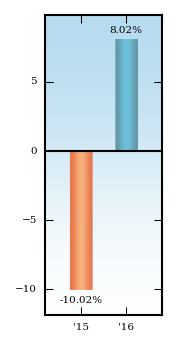1W>T!-1-DB9SD
M:;T"LSJR#QE$*!2B%&B>!)AQ0CI42F6I(\Z?NRM9QN50E:=XP5DZKLS=P)!X
M-X\=8#E=!4)T\0GF4:P11&6C+P&+(PNG^V&@=SBW&
M1]S!AYO>TN[G'3HK%X3J%]OWN<1 'WK8-73JJ_*\:,@F()P5: A5(B&0P]D*
M9N)PY?*T$$Z:_H^$I$*:/4144L"2&5SRM4+^UHD6\19-Y0;8.WGBCQ=[3JE=
MBJS27'AD-U><+_EZO?)JQ>-.Z+WAYO,-V%S+?IZF5#]\D+X4@?&^5SG-M<;-
MP\/OP$; KOJGO7-<6$:XS%]1_1FL.;^]V(#_W=A95R!Q/%\@SFI4F"6E7?)U
M8OD;2I36266>%/:)CM:(R
M5NNM9;J%Y%40[G"*0AS,GJ8E-/V*^T:BI-IM"'7=#Z"&VW!).O4P/[
MM7H9VV6VSL?4;4\7*#G<@. U &LY/9SGM(0C)=Z>Q.U)O%8WP"#-G!\^Q2^W
MIK$&8BV1+U<2^8)<*S(%W5.YLOO>*DM%L<R^6F"W0*YG>=]^MWK?
M/0-+N?CAK[O?869M=;Q>_K9;F-V_[.ZZC+A)A#*YAD6&SZBEU>>F'=72SFVM
M+:BV*ZB)V?J29DI;(FO'7LN&2L7$[%(E
M'FB%BCL+*[W070KC5G@0-\:&51^$MW'!15A\3-[.A4IO:Q<\EH&D,5)?(JW=
M(*X5-F/47^I"G0K^AE/5)YAFP!W0X3:V*QUW$$Z5GY#[VD'>1A3,:EX7BHZ#
MMN,@/IISI9RF>E^Z0=\]_XYF
M+EXX0\\5N_6&6*Y]Q$L\/_5OIG&[U5KT_/&=Y^5Y39>.F\VB>5KUH7_6DPS&
M_I\N]GA,83?1,!206(:;PL2/XH=*#P%[9/DQ!0N,CL$L9N._L?:_9K@3%<_(
MR;]02P,$% @ DI%M34X:I>+A @ G1( !0 !I-^;&3,_"=
M573<[7;#U=--J.;/!=JR<7A[=3EA,\BI_P1@!Y6*N6>G04@/E8 QW!%W_C&^
MV$KD>D81=,!4'KKGH0/+"@$#*0LJAH7,1G- :JQ>WY9SD!IT9(^X8VDXG!/S
M,(>^IWD^%U"-S1#N^A[7W$^B^',<)9^"I<[>.UP+6F):2(=X &"XG@^C@A6"
M.GLO+=H6#U@:D!ED%1.'\+\GS(VKN1XD/JD*V,MU#>**D$T54I59VV$G(!3;
M(FWOJ5&XK5[)>>6L!A9,U7V(: V.$WMVPB9^%/N=>"4MXL]K,!72R+Y4 ZW!
MZ*JFH"F(OE<3$[XLL[VT=G+ZR^X!;M.CR*I*]O(?K[??BC(BU$6>KZKYW$!>
MY=^ARFOU*3'5\TP59H"V?T6N@2V 3V?&WKVXJE=4VH[EFN$0=FA;']:*PKOE
MK2?;DLCG7!ODZ6HM&AGGI+#7_
M_A0<(7/_/&X-LA\,>XUHF'.$BT%#YJ47'U_9"\OHAG++8X1CX'E:H%Y]2]<:
MT23A./_#FC#?W99ZX9-]!+?GL]DZ.7T$4$L#!!0 ( )*1;4TP9&8)VB
M GD @ 4 :7-I+3(P,3@Q,#(V7V1E9BYX;6SM76UOW#B2_G[ _0>=]\L=
M<(XM.\Y,@LDN_+HQ+K%SMN=F!X?#0&ZQV]JH)0\E.38&\]^/E,1NM<0W^84L
MMKG [LRZB])3%*L>OA2K?OK;_3P-[A NDCS[N!&^V=X(4#;)XR2;?=RHBLVH
MF"3)QM_^^J__\M._;6[^X^#BWMUB@AN-
MY(?[(EF1_K[+9,.M?WSY?#FY0?-H,\F*DH!=MJ*/X;4+W[]_OU7_NA EKX_+
MA6P7S=Y6\R,3'3Q4"+U(/A0ULL_Y)"KK+Z)L%@@EZ/_;9&*;]$^;X<[F;OCF
MOH@W2!<'0=/).$_1!9H&M7X?RH=;]'&C2.:W*854_^T&H^G'C:1(R%/"'\/M
MG7?T&7^A;R:O38J;"*-BDL_IDX[:T<'^&67Q<58FY<-I-LWQO%;K.$7TIV(C
MH"U^OCA=T;-]WAORP"WZ^]:X1VZ]N&H72?'M I45SBZK^3S"#S]G:72-4A0G
ME[7\884QL:*'3RB>H?C+Y>'I\1SA&3&"+Q'^ALKB^.IDI.[/],Z7ZQQJ4G%%
M_DG_>).G,<(G"!7;Y#_ACJ:RBF>\//C]+*NB]*3*XO-;ZHU([QW?WZ*L0,45
MCK+B-B]07,/9':G2J">_O*+MNX_O(_JD'H*W(W53/R^.(CP(9$L:PSO'C7^9(\SH!*99T0S#I3>D/EAK&[Z
MSS5)#D>HC)+4*#<\Y94OV#5),4GSHL*HC_0H*B/&W"_0/\__WFXG17BBVT^"
M.1J;*=+)V5[3?^01>%)=H\TX(>CHK'PC:%_4U7?QE"0KMXCH5BNSQ7W 2Z->
MO&HSSN=1,A+RL+5!O&@:56GY:,"L^8LCKGMF[SXD2XA5_"C^Q)E,8J9!O0US[G":-^5
ME/2QV_5_@LV M>W^*WE.T#PHZ#PI^(,]Z\]F'<9T2O/)BB(I70;FF/LEZOXL
MT.3-++_;PIA\C'"'_).ZXYW-[;!=Y_T%X]^^XKRX19.R*JZBZ^5WK3GBXP9/
M8,L JJ5+WK\N2AQ-RB$PGLPJMN4HV,>K*,GP8@]L1YKF4&S:3'$^%V)HWY/S
M>R_'9-WR<2,D5:2@=J.!&)T:$;_96$*6YQ1OC22
MT^P&X:3>O C(N*+;*"@X+=&\^! $&'\8HO;&8W&8/AI;C!(*[BW]%XKN;0<=
M^=-OK+.NR&-[P(8_&\;TE8S0G R%F,RV9.!Z[:51'9!V"DWKU
M+@.W(F8((UF?THWVRX?Y=9YRP/5^-VR_AW1[GW2'PGQ7Q0QC/)Y."?4F=T@!
MLB=G8H*SG!=PL'%^-]1SG]$L2EM^CDG/)-,$84[/">1>HML7^#C;V'A.W
MH'^ #9K/T"WV']W WB/N%OQ[N. YS,Z8:!LN:@GC,_2AYM8$?_]NN4$1E/E2
MQL">WC.=G _V+<)P==^"OF>K>5'0OBGX8_&N/XE$^[Z O3!HWAC05P;LG4'[
MTH"^=9UW!W6G^)V]'_:G_?NDZ '5:O&2UL<]>.G9H*"O^SY/B+\_I558XE'M
M$((OM4,H F]J+V]JU@?UBR,_:L_HA$"/5@[Q7HCJ!D>&74L;T=%]TV/@1UJ:
MYSQHA@B3\^2H$*[':C9!7U!$PQ8X+D$B!YC=)*C[.QV>T]PRI6<=M*8P79$M]22ZR: _LO*DFX)5]G *NK]++Z,4C0>?;^AO9F$
M0/OUW2K_MV[]WN>^Z=B^3NLSF@#SZFP3@4-0HTDM$?$ZLB94G; )MFR!$
M^+7[OQO$=!9AFE[F#DGZ3R)J;'*_3.]S&/$N9TGD+&"L25/2HPIQ(Q;4SRLD
M[%>QI)'S8DDF)$4OCVAJT.).\KS,\I)@4%H<3]0@TH*L>A"9;,0T\<],!["D
MA4G<%U$V0^?3X_O)#?VWVL34V.6M#.)O$TFIZ*(O9A[AP<.O*,*:.'O"YM&.
MH#I)"UN]+'3/4F'S:'])RIME C25BQ[3UL*(Z:1R>\3H4;2VJ\^H425I:%>+
M<>-+UM*\'B,F I(6YG$?ICE-T*N->BAOY-0MQ^4T3Y/\BJSN\SLDIBFQI!6<
MDGZ5R1I9Y93$B:'9@[ K!P(F4>EX:)FLJ3TIZ6Z4T9ZC+]3I-9&<*8PZGE(D
M9PJCVBORI4S@8[E;][.X$PQ;,Z!P,.JT,1R-KS-4%>(F>UO9M4;[D;U4IQ-E
MLB:QJF9W(CF3&'5\DTS6)%:UCQ)+&K9UN7."XI'JEX]T2\(V-K"/@&P8:7.0
M66?:&0%:KY6-GM;Q$SIM;&!7^PUU"ZBI3/BGP-9#FW5P#P^)X>##\AF/P4&GY2,,GQ-/SD8.H#:_A)PJ3GV$ZD"1MQFNU !C'Y
M(?<@B1AD!22'WDP/V(2L=P#.=(%-SH*S<0;>"5[F'Y@S%9Q@:\S9.M,(-H./.U]G.L&F=>V#=K:VMC$+ HH8'N4L'F8'VS L,/F7)W0 Z8);-951",P)6"3[B!<@<&&S;6R
M( :F 6RN%84W,/2P*5<6], T@$VYXF (AA\V_RJ=)VP"UHF98,=ML,E8$HK
M%(#-R'IA%4P79SA9&&3!-(%-S.J@"Z:'=OXEEGJ%)CRAI:I]#B8(>15]&8CG
M3BS$"K%W3'D[ TEK:YDNV#AE/29E
MKW:.;6\X\ CJU>3D-$Y*3\R+J;O*@I)5^G)R@^(J1;W@SMI6=G@&M$-L@C6B
M_[IL%]"&:YWWT?H:#5329Z?K3P(=]]9'V*O;!?#%(.%;!4PV\)49G:G,Z.2X
M?I6;4"^#TY=)]&420586]&42_23(Z4F0KUD(MF8AT''\*D\$M##Y H(VHFQ>
M30%!H/X )J_Y:GZ.5?-S>W2O^S'>X_G/E]:#B-_9TGINNPE()-CK07'M+Z'@
M2XYR7L4[!6+(9>\$T+V=O.2(-(+R,$^K>786S3EV+1$UDW[S/IE7\\-J7J7U
MI9MZ=Z_)<'1^A_#Y=$H&;3;[BI,)!_W(YB T*F]X^^F:S0QJT %P.K^E[N@\
M^UKAR4U4H$+_VXQ]C$$-64*M1XTYO<8 M)&.-WDC.Z/M/+M 27:'BA+%1\E=
M$A->H1O_*P\$0CR?P7&6N(WZ7O7OYAJ))4V#A:!3Y3Q6(6Z>-4O2<1
M-8Q4BLVHO>U/)GF5E6V7[!<%*CE[ E)A*V@U,-J88PE<$5?(WE5/O=6)9$IH
M?2==6XF1,T,(&:V?2;%FD$%(<3U*H;'S1 @9L$K=#H)([0%W6^WM]?EH%?8CYBX#^(J"_"+B^#@0F
M<_J;@X[>''PEYN"O&OJKAF!6Y:_AJN$K\2N0:';0T>*[8!)1T_<3E:@AWU 4
M@O<&!FXHO]1U@"R:U6.+1A;);RZ()$W@[&Z&TKU0A.^2"0IWKD,5;OV61IP<
M#ZHCSK)8![-F,S-7A-1P;6$C7?-+E- P9WR!
MDOEUA8O:KF18==J8P'Z&2IVN%8C9"Z'4I6FQE[.^U35""WV?!^&:CJY60I<(
MX6J.KA*:/A+"91Q=E23XK=ZZT<6OXULA7+O1U4?@?/NW:1S;^&Y5.KZ/YK
M\%';SD5MNS_8?62VC\SVD=D^,ML99=8L,MM]!H&ZS/;1UWYZ!&$8^0AK'V'M
M(ZS==A(P&=!'43L:1;U&0]Y'2OM(:3"KY-<0*;U&O@,27:YVJSA^5"1G.@Y:
MCA=R$#0?N3<UKX!I%?IO#11*]J
M?';3P6HY2_Z@M+X?\ 3XNS#B31\+?P]&I.DCX=,1/W(="GMGYBQ?IGFNZ7&/
MQYE[4L[\S^ L#SK9HM=YNFD]'@O4?LT:A@'"-0CK0\^' OI00'?,!29_^'!
MQ\,!71WP/B30AP3ZD$ ?$NB,,FL=$N@JBT!==ONP0#]-@C*4?&B@#PWTH8'N
M.PJ83.C# ]]#!'V(()A5\^L+$73>?T"B37'7ZL9C\=O8#1^4Z>%.
M*"%/"V]L@(:U:>P'#S00YS!/JWEV%LTY/F1,6[NZZ(52\EH P*T,L>2U (!;
M&7K):V$?MSHDD]<"2H2=!AF-,5OKNS;/JV O+A508.?3U=J%&/#Y=+7VACL.
M:Z!6)[YUS]'MQ2:+_55>1ND%*BN<%0?$=Q#ALIZEO>--W=YQ$^'7SPC:AP3_
MRQ[S?VN]4+(>90AJQW$M ER=L0CK8\]'N/H(5X?L!2:#^!!7YT)Y^BA7'^6Z!IX")A?Z,%='
MPUS7;=S[.%68
M'Z,OM,M<=U+3.SN=8.#.=O) P@*N=TI<5@OQZECWL!^M+V0?A_S=,U&PQ?7L
M'<+1C.-C>CEW?^!YF1]Z7J9Y%M_;O)K,U=:C74 M>M1[[4
MN1_4PU#7SO-<.)"4':CZS5"P?@84Y;[F2T-P(WW6U@C\/2)_C\CH/:+'3\:^
M7!Z>'L\1GB79[$N$OZ&R"+>W/Z%XAN(R__GRZ)08]WW]/[@QISC/\I(\,"4.
MB=A]-:GQD2$R1:A 37:((L_QE*W>445VV JN4.8-[EM*&
MAL($UW;V 7(*OM+=3=>(8[.DPJ:C"#600XXEE,#W1@9N.!M#*\H<*1&UA/0R
M(4/[E/RWR7NJ@[C?Q!+R!8*CJ.3X874+>R&*^DY/,F"L'^4]59'^.(*07O%)
M"O7&EZ/I EC$TD52?&OT.D)EE*0_9[5QH3BI-XR+PPICE$T>FEDN9P9\?'7"
M(YX? [H;UKR#_"M]S5;SGJ!Y4?#'XE5_$H'V=0%[7]"\,*!O#-@K@_:= 7WI
M.D\#K<^M-+<*>7
MX Y,_,&<4\JL219$STZ0IWG^%A38Z&UO./XFE1R3OTGE;U)YYGZES.UO8SF6
M"M*;$]P;73[#).@+4=9W)=8YPZ3W2\[2_/*3B#*F@TW%."''F Y1>R.T
M:H3/,]Q?&EO3G_4XOB(#X8 \_YL,)U_>7BB>TEA5T%U=[B8%=3(51GT%CZ(R
M:GU,\40[?$_M"M4:P>]8^%,^=4#QO<^!&MX_*>]51>=XB
MUX,%7\_)+;R /&]#_A#W25N\_A#7'^)Z7_2J^-P'W(L"[N%%9GF;\K'W/O8>
M<.R]SQSF,X=!C.E_51<4P"KE6.8POV@ /\&!N6CP0:#P@D"]9?EX4!\/ZN-!
M <>#>A>U!N3O0T/7)C34VZ-+4:)ZYXD7:$:7TE%6GD7SOL\0BYE=-O 3?/9_
M-^O-/J$H)H-*]DD7(B:0G5__D_1%$P(821G%]QC=5$U=:$+HSR5@;Q'V 4?;O-DZRD)^9TW2SF/:ZL%:Q?DHRN
M]$_KG;PZU11J)A+[U;!"VLKR&4*LQJK'1]42W?S]%!%6)HQR3
MB56$'Q80$:*%/].J$TS%67:,?Y19+U"4I'_CJ_RBN5C21%*)O;&DA4G<9WEY
MF)/WIBT4:LI'%;K*^V-*K,B(1QCEE6A^FRK#._IBYA$>/-!ZQ)HX>\+FT8X(
M39&TL-7+PNU_J;!YM*+JYWPI2_AVM? -+A$:P[>GA6_/%KYP6P?49Y TM"N%GH>@M<" &ZEY^"U (!;Z5%X+>SC5GL:7@OSN$=L
MV$E:F,=]F.8%F8YIHQ[*&XG4(.NE$LT>A#/-@8!)5#HL(Y,UB76QM7V89Q.R
M8L."8Q&5O*G[%M*;%D:_-GVASI<6R9G"J..)1'*F,*J]#E_*%+[/>8&^Y!EZ
MX /K_&QLY.593$\IBV2:H/BRC,J*LZTAEC2%L^Z6YJX=W3KA0QP(F>O%\C2C
M=POC(W1+!A=YZ@/Y0YF4E2!J5Z>1,:L1S?M7?C2&1A+FU__=%"8^$C/O/R#K
MJYL(E_M9W$G^4U\7%I*83AO#>>=T*$XA;AAQ)S7Z:9I613US*?XGPDETG:1)
M^7 ^;:YDRI/]C7F,80W/LWH_Y1Q_1H5 4M
M3..^BY*T_G[^03YZ0
MIZ.3BAB7O.*4[-^J[V4MU'+=,UB36]B.VAX?U-:_/>11SAJ^ZA9$3
M[BRKHK1Q_\)9&%?(.#K)K$PD9QKC*3'ENGOXJ1TDHJ:1AN_?<_8?AQ(6<''V
MSX<2%G#M*'$-\HT:P<79MQ]*6,#U5HGKK15-A 5<"G_?2%C I?#WC80%7 I_WTA8P*7P]XV$!5P*?]](F,?%BR\82EC
MI?3WH15_'RK]?6C%WX=*?Q]:\?>ATM^'5OQ]J/3WH15_'RK]?6C%WX=*?Q]:
M\?>ATM^'5OQ]J/3WH15_OZ/T]SN&_#W;V=2)UY#)FL2JCML02YK$>8&B(L\N
M$=TK1G&3O#VA:=UH-A>XYEF=:\/
M*4]R7&,\R\LZH1V*3[-ETER9FEK-36A$3S*OF>?0Z[WL/G!=87"(7J^5C;[_F=XH;WSQ"Y-_E
MQ7OE#6UHT4F+P=#4 X63$&1$4ROC:EPHJ["-#>R+E7ZS[.3'J;)%VJ/7MF;>
M:K7_1GQ[6[LK?1SJ719U"R,[:W>$-V9(+SA.(FL+JRQ43BYN";%@C2.6M(13
M=,%;(FH3*>\H1"QJ$2GWL%(L:@GI95+S11NXJ86XW\0290.KJ"5.6*>-3>R"JR(*<9N(]<%:PTG6#,>_5\E=E)*9
MI3YH7C,3&ES=)+A\4-J@0,P"0HF]B27-XQ38%E?(/#H5,,.8=&Q&*KR*]IGK
M6-?5JS?G*U7!-2OOBFN0&JK!_03L>%BDM%]W&R1H3@G3%O<@@ H4[F&%TQ;V
M(+X*)NQAW=-EC6D7\%]R:J&V&@PBMD!IT"^6VH(>A'-!!,W;KFSQ#\*^0.$7
MU59MP0]BPT"#[\R4&"\-EM^@%!A9=)4I!9MM->NO,F5@L_ C2Z\RY6!3]:CZ
MJTPEV#2N58R5J0*;T9]>?)7I"9OWI159F0JP9P&]HJT,-&SJE]1R90K IO^5
M@J]L3><$X?.KP#(5G*#W;G$.!APVE7,KR#+HL(E:7%F6X8?-RM)RLTP%Z&PL
M*D/+\,-F6?URM$P?V)0[IB@MTP@V'VO4J&6*P.9EC9*U;"<3-EMK5+!EBL#F
M;"5\V,RM6>66*0.;RV7(8;.X3D5C@Q#^ 7$68J.$'_O0+###MLGN<7'V;88?,ZOS Q"_UT@L![
M18L9=B>X6;-P,=/)"9Y65S!FZKC$SKR*QDP/EXB:5^&8Z>$46W,J'C,]7&)K
M7@5DIH=+E"W9/WWG$GT/LS$P+6 3^:"(,KL) 9O#9:65F0:PF5Q5;)EI 9N[
M5RHR,\BP^5E4JYFAA\W*HBK.##UL+N97>&;88?-OKP@T PV;;,7%H1E^V"3+
MK1S-H,-F5JTRTNS>'FRV7:DUS2##IM=^-6J&&CZ=+K'"YE&=.M9,$]B)JUPP_;!I65[]F>L"F8WE%;*8#;%[6+([-+J7#9F:]
M0ME,%]B4/:BDS6##YFQ9?6VF@1M,+JZWS?2 S>/<1*,,.FSV%B4=9>AAT[,D
M.R)3 #8_#ZM[,]RP^7A8_9OAALW!P^K@BQPJL/EV6#Y\ 1PVN0[KBR^ PZ;7
M80'R!7#8K#JL4+X [@Z--B7,%\#=(=&FQOD"N#O\V11!7P!WAS>;*ND+X.X0
M9U-&?0'<'>9LZJPO$G6YPYQ-(?8%<'>8LZG4O@#N#G,VI=P7P-UASJ;6^P*X
M.\S9%(-? '>'.9MJ\0O@[C!G4TY^ =PEYNQ$;X7 ,WD-"](O@+O$G&&'.8'G
M\1J6M%\ =XDYPPYS L_>U0/>84[@N;MZP#O,"3QI5P]XASF!I^KJ >\P)_ <
M73W@'>8$GHQK%?A.ASF!Y]QBQRR2\+T0>+8MIH(PAB\$GF7K8%'QGM8ZO$3T
MH O%XTH;+E2%S;Y+5>M0#U;!\2POZV3+*#[-EK4J.EK!IN9^;?JVZ-T"/6Q^
M9M^DK\7*65D(/#672(F. K YFU_'OC^28-/W(EB"JTMO/,$F=+DJ'35@T_OG
M_+MZ4+E![UQ55L<4\.Q<4DTZ6L"F<%5<;0@\-5_R,\W'TW#)
M"4UE11:+JZX+-K,/JM/3B+P4W459>963+\/R]744@LWO?87.,U2O1,ZG^U/B
ME8E*ES?Y]ZY7ADWT?7TZJ<>80O7PPQV-8//^8,B)0UE#X-FY^JHL-EN:%3__
ME@1;&X_> @">R4O8&;SOZM940KP#!3QY%Z>@>#]6.02>PHNG J<<'O L7APM
M>JLUX.F[. KT,LR$P+-WB33H'+@!S^$ET*![G@\\DQ='@\NDIL>IY-P^;N507ZE@R;M5>Q+V$#3]NU@"VS
MVF7BKI^V>BI\)O^7_-+^G?[/=52@O_X_4$L#!!0 ( )*1;4W(1%/O("0
M -\< @ 4 :7-I+3(P,3@Q,#(V7VQA8BYX;6SM76UOW#B2_G[ _0=>%@?,
M G9LV;$3#V:T<.P$8YP=YVS/S2Z"PT!NL6UMNB6OI';L?W\DI6Z]\4U2D923
MFP\3MUADD?4\+)$EOOSRMZ?E CWB-(N2^-=7WNO=5PC'LR2,XKM?7ZVR[2";
M1=&KO_G__F^__,?V]M_?7YVC,)FMECC.T2S%08Y#=/N,3I,XQHL%?D8?HSB(
M9U&P0-?)8I638C-T=H$^I\D,9UF2HJ/7WNN]U[MHE1$=Z./JGU&>K=!9G)-*
MY,$=1G__(XC#[6VJK>SM[OK[?S]XOQZ=H^7P784DW+B&7Z%B/S/&7MXGLR"G#6QEOWI-EVL"]C?
MV>@22M!?VVNQ;?IHV]O;WO=>/V7AJW45B4PDT5*K7"%/R^,URCLZ.MIAJ:6H
M1M5?$9LA]$N:+/ 5GB/Z[^]79\*,1SM48B?&=Q3&\^ 6+X@N6MC/^?,#_O55
M%BT?%GC][#[%^7>;_KN]
MZY70_B5-_R3TS1[P+%]E-\%M91+6AE]?=5)W-K6A HWZI#A+5NFL703[1Z1&
MRP@E?,L%*9)V7AQO_W[]"D6AJ'"_>O#S+T7^1K6/TZ8E@W2VKA#Y4U&G4F)G
MEA"R/^3;BSJ[YFFRY%BM5)8(K;%C%N2K*/MZA?-5&A_?9GD:S/(62#R!H5"+
ME<&@S2G?I\]VBH=.$!>WN0)=;N.AN(/_CPMWVDWI-@6
M7,VDH7#S%, W2C97_]"]*<+C'D-K= 5&=,TKI]Q&B7AAS@\)2\B < MF;%(
M_$7W@@@NRIE=44)G;+!-." G38'%&QIY/_X6?N53HR(SC
M@D E)!G:*OSR 6)/$'GDC@^"YK<)(3&Z*48<$X\44J_T<1'/C/?#XM\JN17N< ISF9I]$!?1Z*18$-D
M]("0HQ!X7%C74!L>UAX['25R#, 9+ J,;HH/-VE /XE=/R]ODT4+P%;:4 9P
M5]:U,RT *>,6:2^%SC(5BGF. B1T.!I@E0IT'2!K\.O/4=E@D.'
M(+=$;2:A1, 2.[A>0"P&QQ 3GD&HQ7^/20)&-\$3=N(E5.V7,<.2YSB>YSAE
M!KJ,3^DWCNBV6!YU@9>WG4FG4GKP1$.O&D!S#H4RGPD4M$$T/EF7<3(+T;-.
M;4+B"*<_]_H@]8C3VR3#YV,!(UK]8G$&^MZ1HP9.TA"GO[[:HZLB77F'XSB\
M#A:XIY=HYP)G(;]:AKU&2ZG4>Z @#A&51LD0FC.QH5]+=+)*
M4QS/GM%O.+S#(;JX/CE#'Y8XO:-?#2Z"]"O.,_3AYN/+P$+\KAR)S'X?9-:[
MIH+RPU8/:/8'0(.*O"\$H?T-0OL6YEI50)M9]6019!DOBBL4&[_<@Z\8>N%'
M2XO/?B/VP&4,5V$%WGH0,0)&&%*IXPZ#NLF#?8I $= +M5UZG0%N1D:B!M><
M@\2X@T=()\3A>&^\H[T][@BIFSP44)$B&$ [I?O5$Z,WP+940>]_71=?
MW_Z*OI1/G7A+8=-YVV YAC8"_>7M/XOEU7SDN\E#@1>(6=%&S
M*\QE)C8+^>HITX.$3,50(4)&Z6[9>_W7H'?H-K,6.A84V"
M_"E(TX"R3.09)'(CH1>K!F4!1\V&$)LTYXY!:9,.4>2(F'F;/&"J,KXKJY"=
M!+Q]$V*QP>\2A6*@5XE(B[])0>LD5*85Q''S+E$8I?8JT0#$I)/Y\!308Z:D
M+Y2VS$CGPE<)ZEA:*C9.I7P^B;<-WPP=7R(VO@5:Z+Z").(P9+'T0A)KZU!H
MY
M]44J>]0^!VE@884\UOI.%@F]MT/D-\1B8^$7*8;E04=+C1!E
MFG,GH;)(ER0R-$R_:B2#&O"1C)7ABW#,TAVEE$F.WR3R@8FKT@<115%^#M$EV[E\T3,-9AR0'Q]PNC?MD$>+T(Q8M-Q )
MC=JQ(50*N&^CJ\.O/4B
MQ8$'(CU\>(58,NC.&HV:R(
MV:0Y'SPI;=)9 B-'Q"1GLE,\QVF*0SI)O%-21R(^DD'*BH 22:S-WWBEM0@J
M9:;"*Z6E.O320LTHRZX(&OAR_N%I=D__8N]O!=/D6<:R3:="L(R3:JQ8Q\3H
MZ55KP?4P;1KQ>+2IJ+-N]/89
MT?0I+4'FFD:T6E0(CC4*\4,-4DE("AD).L@4<2BTQ3BT-8$0A(:%Y$QRL]_A
MCRB_O\(A7C+ETGEDGXPP/-.IG G:2?6V6;B%J#BJY%U.)OO;3T1*77QM;+Y(
MJHKTW8BAR JT*4.K@D8V:,@U=[GZ*:DS=3IK#H885+B/0QMTR^35?VU+=#+O?;7E
M=$CI])VO&TF6B,.PT%)<6:RM,^N97)A9:2D1V]P%G#8UC BT5,CR71&)6J[='GC8'327GW?9V.>, /4]@F+6_1$^CB;*C924]A6T7.7
MG@9D5FBFRRX#I++$)0&%'+[%E(80,\8>48KST<_B$#_I68\PM38K'=]F>1K,\A81A%) &\W:
M:HUL,=LHZ6PN^WD"N\K:)A#N)^,9W\J6U62Q6L:?@F4;48DU^8=/DH?4$6HX7H?U7XICBIY=F5X5F[T03\%&0K0 R8MC?.@V(VQ
M+@*Q,O[J9F@_P,#U,?Y &K@A='[?N:%/,X\Q M>K9(FX3&5OPDZ3GG7S]:!E
M&U23=*SI/EL^)!D.+^//A##W088S33_;MXR1=!U695#Z]JS"ALY-#I\G0?A7
M5!: DAAMBD"$WO_9=<(.23[,Z!W2#Z>*R4ZPWBS:?XBAEW,DX?M4#Y3F6HHW
MY-[L'GY!0XL^INV0N2_X+B@L'E3(F8.>(XN"&%\,:8FJDT;,V_$$'
M&654I:!-,>S X49!D^H5HS&1#42&\\O,TLW-AHB/F'7CZD&+ME+)P0LYU>J!
MUG-*%/FU72XDE3N(.%XFJSAG^V'P$H=.Z*EAK-JZ3\MP:=X0?U0 %N.[@'2
M\S&XTA9!W$=A<2,\^(3S]7F0PG>)0&8H%Z0J8=C 5^&3Q]7YUA-[94BM4G'$!A::
M\[\2C3S)@X5Z]B?2Y-_0_$AQ&/GQ/"_Z,/HCB![=].$Q"(DGCQ!X[??!BV2[
M33(\%+']'P6Q_0UB^U:F^PHG#-GK3;M?GN\M2!,4I)E3TB0;TN!2WN49RC*"
MF+5]/W>KW7V'>]N7 P.46QWK4S7?@W]U1L&^AJLH.1U0
M#3F/'NI_9'P=NJ#+]#I:1HL@_93$O9R0*B,$8_4J!^^(%'J;5$U25$JCGX@\
MFA!;]>S'YZL^OF;NZ:7Q86780"@U^'Y>N5H8JHF4^"Q!*X;K9)NSPCBUVWDM
MP6(DE"O6U<+G)4( %5(0%6\F5BO6]CU 8C>D<)(L'Y*8.!1/S\5JR \ED795
M8-RN6IU?B2#WQ-(V3T6Q7F"9I==>3WJ)Y4?32U458'H)U57TVIL2O53FX=!+
M!RRS]-KO22^Q_&AZJ:H"3"^ANHI>^U.BE\H\''KI@&7FQO79OU91BD/ZG8(=
MT!.'2HIIYAE\TWJ?*L%034^EOQ8KONJP,#T-V[@D72]CU:Y5GP"$AB)PNKI_
M-#0MA]Q(/8J%(I?I%8Z6MZLT8Y\BA%Y%)\-0/NI7!L:?:.CSJZ4T-*#6$'-!
M/7T35;QS"YFA;4U:BG\,]*!B)QJ:S(11M!37L/R.H+,;8]FL<%F_=P1G<4KD
M!@?F5*J!0MA"-7YW>8^;8+7*$+7 G X,%BZG$[!$) 1S&9T9?@ATM"^?<\(,
M>?M%%\PYX@2])G;7DS)B+0+#AZ9"$VLVFXI\C]WSZYX(S8:+:&#"V/VF?GT[
MWT9']S;;;\U[[+?02\3"^L[U3A7VU=US'Y0Q_5;OXG1@YR2#P7U&")<+=+GM
MEC("V-86>N>^7N]\D6"X[YX'ZNYY $J9 SO=\^"5?S I1AQH,0+8UA:ZYX%>
M]WR18#COGMZNLGMZX_>^_M3HD25<-EE( VMOG^R73H#&Y?)!I.
M.^BGI#*@5G2"GP&&3[+*F. 65U^79Y^2&LLF$-"0F4E$-15LEJGV_IER7WA+
M39^,\-035!):B\ERE$XF/BLVB [)3(-C=IC+U:?T_]\3:)FV%7OZCW6*= @]_*T>ED
MPK%B6^FRSB1N#KQ"$5'_O@"R[!;>!RF]W"AG5\$+0N<"F:%$DJJ$Z?5\%3YY
MS*ZWRA%+*7:3!V\U$BB"W5/45N+3
M_SO9(21H;FTSD#'30D=\..7[Y;&)Q4/T$#3&NY>A]SN]4*L/*Y[15E$^] [;W?OD/4@\N#/B^N3LP]+G-Y%
M\=U%D'[%>>;M[OZ&PSL4&9VT["CL:UWTT*Y?_?2:!I"+'GUTI=S>P:ME1UG^KI=A>BZC_+?H)H
M1[E>=Y.?BG]*E2A,$%&*2JVH4HN(7D05;VTN8J![U)ER-V>'?[^=Q>XNZV-"
MX> .UP?'@D";5'+PA$6M'FCF(E'DEXFH,95Q$H#3L$=M1J.'B"W><%=Z2>0
M.6-P;9=8FT]'(:X6!RF-(*6),0C PX210X7U4%8WW9XKUN/ZX@T\(PULGMI
MM(8\('OX53'=D5M:??:[.+MK\W0B].(;2$HS:W!9Z/0=A256WQU,[KW"IBJG
M0=XFA%HFK)\ER&649C1NU>*>79?22.HT* 2^'E&FL
M+8DLQ% A5PS;:Y)3V*FI83K.XCM-.(U>,OPIR4^2-,4+>L+I37)%.\'I"M\D
M[8.!^9SLDW_LC:R]JPK*UA[JU]3-$,F#JDPT)L^R(9*/_N <(^VZ>/R=I/D\647)"#1#3I]UAA$IX*('U*@'#5H4N?YV.-@*H
M(>&0@'IFJMBF#Y>Q2=!YDN&+),;/G#E/+6W,%*>C FY&4Q7-)C"(_D;L@4,6
M<-O1SD^
M#D/"!(GOE.4!IA>_2D9YUE(I)AP1S(@@*B6G1SV^\90<%$-JFHR?@RP_3=BD
MY2P.(U(Z_K@B_E7BX219 *BHK! X$\4:&T2D8HC*L7GM6A(5HM-@HM)V7")J
MX6EC,\[;]G>X3C+0CI&W?;@T=#/.6[89Y^T$MHF\[<)OSK2&-^.\Y6[&>2%6
MMOS9FZ[ N4EHD+^HPGF]#26( IFA;)"JA"$$7X5/'].H(ON"4Z1L(9;F@AM2
M.U0$45K?Z(;SMG;.4@BYZ-CMY[(*P.Y"YVJJ-J-O(2Y]7"V*T+%/=Y^Z"B.K
M7-+D$3R'[/!'Q9TIL4:?,<;9\EMT=X^S_+]71#E.%\_B]Y)4M*PS 5>S2A,>IN^'60O,!D&<:Z('5E8)V11)^$7*Y?9FHK=1V4
M'FH.F-:+9:889I-=8F9-CU-]^62<2^?)-[VWGDQP*(?4RF'X(]'C%VE3>N.I
MK5*Q1P\5HUZ(6P7)ZTXB/]87*:L"ZX[$ZL2L($?@SB_26Z"IU,\QVF*
M0P4AQ=F@**FJF!E2"K5R:$D_=JZ%:9"+B*.U_!28J;*@F)LZZ%IAYX>G!P(<
M6_-T/"=>F]2%]9GV*6@]\D'Q4UDU,P05J^4PM":, BK-.%K(3X&A2AN**:J%
ML!&.7CY@NI(XOENO:A=>L2:5',I##?4PS),I\C>):+.GP?G]:!J6J?BDB8T9
M+[=>F'Y#!J!TDQUO!,B7&>R]9"J!/!57A5_M)U@_WW(W=I-9H>9K5+8WN?/J
M?8J#KP])%.>G439+5G$NV&+%%1RYETJB''33%$_/9F-?E8@VJ>[W/TE,T]GH
MI(#&#GTNHCA:KI9G\2.98M#=K5>XV&1UO*0U4I%*F1V,:IH5-41 E78.+;=0
MF0E5N= Z&_I29)P&5S5M*V%P#QX8W9!ZA1\(K8C^]TE^?Q%D9,QWS#8+AIW9
M@%Z6L=M.=2H$N]-4JK':7+H10U0.%8(H*':2$E'WOE3+=MWMH[IX&N5A;>)Q
M.?^4Q"F>K=*4#"2/9\S3D^H(Z*B5U0/EIPZBBN.UF>FR1S5Y5&9@;)U
M E3M8= N8WM";F:^FI-9\68'-OY&]UB_#S(<7L8?LCQ:TEUD[8FK5I;!,]@>
M%0*:RNIH])G49CZ[A8@@VX"_A9@L(E3=2+N
M5TG!R%XY!R_8[U\]H)7\/13[G,,AZ+N]XNVDV#K IK5= L-0-_K^;W2DWP)2
MH3P-DC2,XB!]WM0.8WKTVF(5=KZDC"AG[-A@<-5A1PK]JU&-&YH^&I';Y^*34!RR(S2/*!%!8@QPK!388H;&^A8@L.5CL08
MF@C4P3&DK: @1W%$3_&X&!VZ)8; #$U.2 QOT'_D9W&V(B/+4_R09!$I]9D\
MR*-\Q3G^2RO'.*^B51U(!R-7N/8U=#,_$T.5'*H).G<\6G9K^R!M)(WQ[R3@
MG;C?2!G#IU;Q<+Q9%USPH_SE"OU6*YLH<^QH#DW1^H]VXBA,#:WR:)5=(NMZ
M*0>_Q2V([2W8H.HXV(Y#%!['$CVWL/'!LKER\#+&=/ON97HN/3BJ)0:P+I"K
M&'P98%-+8]7?^D(B>I3W^61.@>*:A;NR3PB)\8/'PC"B[XM@48Q$V15N8NH(
MQ"&.&Y-5!)Q*?&W-0\8V(NN)17%EX"28);46_V@Q%7)&-Q*59TF5$9/K8(&S
M\R0(VTY*+3YV.Y&J(K [BH3:JJ,BJN/#UL$Q)H:8G$.RZ1JLN]M(!SSC1X?Q
M)QI<"8A3KHQ,/'@*6N=5
M7GQGX,8[2U?=B>^X:W78"5QYU^.N.XN &.^Z;6U3N'T0 J'?=D[.MJ5=.$B
M&8(H=47P'9:5WAKLTF>N&5%O-9\(;0O;0+QS]W@G&0CQ7C>-]T;&.(&CVYFI7<1WYL XGM*Q/=L([XO1WP?#/%]HXCO('MA$_E"-^"(;XH5'$#SF('TX \4,EXH>V$9?=:%(D R'>ZT:3
MWHB_Y2#N_,J->JN%B+^UC?@[.>+OP!!_9Q3Q=QS$WTT \7=*Q-_91OQ(CO@1
M&.)'1A$_XB!^- '$CY2('UE%G#1#%G,KDF$N4]HU&'-CI7E[;+
MN2QMUWG,K=YJ(>)V8VZT&7+$@6)N=45&$._$W.BS"2"NB+FU+6P#<5G,K4@&
M0MQ@S(V5WD7<>!?LJMM=@S$W5GH7<>1=QYS*W>:B'BMF-NGCSFYH'%W#RC,3>/$W/S)A!S\Y0Q-\]VS,V3Q]P\
ML)B;9S3FYG%B;MX$8FZ>,N;FV8ZY>?*8FP<6<_.,QMP\3LS-FT#,S5/&W#S;
M,3=/'G/SP&)NGM&8F\>)N7D3B+EYRIB;9SOFYLEC;AY8S,TS&G/S.#$W;P(Q
M-T\9<_-LQ]P\^>S, YN=>49G9QYG=N9-8';F*6=GGNW9F2>?G7E@LS//Z.S,
MX\S.O G,SCSE[,RS/3O;D\_.]L!F9WM&9V=[G-G9W@1F9WO*V=F>^=G9^L2'
M*QQD27R-Z7D/.#Q9!%EV&LWGF!Z+^I%4_FRYQ&$4Y'CQ_#G%,_)W?/<9IU'2
M/H\2HL"Q)X2,;PP,#P'J4YTRLH6*8M"Z',0*0IN2$"49JI6%-H6AHK0)G$4R
M'IKN:24P5#/IR2_9!4,S^+/:9(]D)IW3@'NF7=\I^E11>C^
MH:.ZV158#C1/TK(;T.-WREPHBE&5;Q*D[V%:'K][$L#*];;TC"#585":>:"N
MM956"8:R>BHYU]FR,Z(XYT--X2I;J=W$U]@JT;3"P]I9:*2WQ'?*Z[]Y&: 8
M**Z,&?IQ]'&XUSC\KI2; N_$UA*33HZ>$<8Q99^24QRN9O1X".*(Z84NZ]L$
M;H*GSI4_>EF&LJY/A6!XIZ71+PCV*4$;.?:"II);M3M^F+3#UW(?\U5$[ NI
M%>=W&6,V)KB4&%=4RXPM%2CD.D9XU6PP;DWGM?'),GC)*?#!#I%JR6?Q>ROLB.-B#?840G5,4P:Q$RO
M,E)C3I?HR-5VU.=_+"'W8Y(#8)9CN%V;BT8\X#>YP/2HJ.!56(C@X
M1JU4#A2M%NMQ>E*ILOFUL+66^:U11'A@J5P6DBBFCB^5JG)Y<*:.#>2$L7;U)8KJ48H!,:2@V1I)"B\_^F0@]&@V7,J-C=%NDH/4 :=%4
M;8P7I1K_@%V]X208J6R\E!M=T]LD1W?]LE@.F!S@*YJ%:GQO=W+LX*YLUK&]
M$7;4K@&\QH\X/@V>_Q'A1<@?JRJEAS)%LQHP?%$I\QL7.C(11&00$]J:P*T'
MFM:J^-4#-[LL$PUW=3* <\W0P%=#GY1Q[D_TU[>8!N7LC95%5?A\3Q(T"5?*
M0G.M406S-"M4R1G&9*;$K(9]U*3JH&253YI4@F>1'0+)N3,EUN@3Q@57;H*G
M#_]:18_! L>Y)G%X>0!9)*Z2,4IQ5(KX1;]K5;*3HIO8<%+NR>$T0L2;^RC-
MG^7#>H',4*))5<(0BZ_"+Q[7AT[N@M!2*U0L4=K>!BM$PW"Q&! W# VYA5HX
M#'$]N%991$@5>P/IIF+>\)DK <,1 T-EGH(N,YP-BB7M%Y'!S@"XJ5-* 2CT
M30+?Q=P]VBJ@[6&L'*Y*)4>C;WIH*E-4Y\54!J$:AN%P1@Q-V89SDI'\)K_(
M'[=!AOW_ U!+ P04 " "2D6U-H3G'QC$> #I1@( % &ES:2TR,#$X
M,3 R-E]P&UL[5UM;]RVEOZ^P/X';?;K.K9F_!(7S;UP/#9BW-CCM=UM
MB\6BD$?TF(U&'S4!3/.23U\S]?
M9H'SC.($1^''=^[[O7<."B>1C\/IQW?S9,=+)AB_^^<__OW??OZ/G9W?/MU\
M;.19@2$*DW1
M2Y!#4(;)3R_W<8 _OGM,TZ>?=G>_??OVGO[F?11/=P=[>\-=')([A!/TCMG3
M\C7[;\/,VCT^/M[-KI:F"189DMNZN[]=?KF=/**9M\-5H(#"D+\CS7"8_3P\1U.\,Y@S_W@[@T.W[\D_G_2JDF]
M1;6D5EKI:G7N;M"J&YQ\O4'I/ YOY[.9%R]^"0/O'@7(Q[=9D=-Y'),^N/B,
M_"GR+V]/+\YF*)Z2WG+IQ5]1FIS=G6^[V5L"M0XOM&OY\P!E]3Q&@8_B=^[
MBU(OR)_>Y),7GQ+C-+O[X>MT.%5]&[6&O(?)"[!9"=<%CK;>K/85;V?D'Z'4
MPP&L@7\33&NQ@I-)$"7S&/$81E[JL7=M%]1L'YB&GVSJE*#)^VGTO!O'.3^B
MRO5-E-R1M'I _J:M'^SLN3M#-VN_N(X"[1-I'IT)T<'J"ZFA5C=Z25'H(Y_5
M3B&_PJP.I_2V>]D?9\=A9:L_DOLX^8V?^=34-*@()K4VD#^[:51
MO F!5?:,'I(+&!IX,$:*'#/F0=3DC_\6D?.@^\*<<_=PT>[QS @N^#7O ]
M(G/ &&?>F8SVF@E@]FLX"Q$.#;T\B==$XZ>WB]E]%'!$0AX0O:.H%A7OBDR;@!XQB3@>)#3P=)$#9
MU!#TW#"'?8.FF+8K3*^\&?\\B$W@R2#&6:@P[%*$EOZM8"SB+\)CG4=8.D20
M>ST;.4]IAI$PJ'@+U$W@\2_&6:CP85,1?M[EHU2O&KO:;NYN&=QRW7IPB]:S
MFU?D%#4YW\NZ_B8617T.J]#):W1HE0ZKTRDJ=6BM/U@4K.TC5(D)LE^=O.!$
M\C1)K8&%R+1X.XJ7C:*9AWGGB;_8!9S2@*GFB9$; '6P:S%M@V
MSJ?P09>;=<*ILA.(J>7& 2/DGCRD*+[S7E R#D?41<7W^?)%X9"AM89)M1;V
MEE]7ZS%^$OJW7H!69)XOU3,%>/BU3(VQ&$?F5IT&7I*(AFJI&;3!6@K4)*O+
MNH7#=/-RMRR*I<]F( VD&V14A!.TTVQIHWL\& B?^>9EJ%0UD=8R*( G:S_X
MRIEU?(GUGOCE\NH,WQUZ23^1VW\5/?YR6WB13 U@YI08(5JU\EM%^@KEX FP
M G@FQK;RMDHQZFN\?\7IXW*5MU*-50K"DV,5],R1,?)PR-?9<9P6-9AI1-JHUXC1472TFKP@X>LPJPC%PC'39/F&7+!=OR
MW*X(/,K;X6;L'YM@?PGX,\I684EGX.5U>+P*0&XKV_UJQ(_O_\Q7:(EY;UZ&
M1WL3(X1U9NU8OXXQ3?'+1AB%'6 =FF!!++UII\@MFD2AWT83D25@541PZPL!
MS4S.Q0,-?Q$>D3Q"QEVG&SO:$'[EQ=1E?M:Y/R([L#*(P#)%X*ZHY ))IYYH
MQX',")X6,J1,"".YAD9$2,RJW P>KW*LC-E#L%W\.HK3ARC T1UI7/2,8O%X
M+S>#)X<<*\L9=[J0?C4YI$$#A6$/)&F^!H;@7\SG492&48H2S8M99 =/$@58
M-FH9">2P,7-4Z$[C=E,MQPISL%0K,#/&C01O&)P;+YRB\!NP_/) &:%PW[-UX)\6OR-/,O-16D)7A(/+=#&R
M3)'+=+7T:A7FT,E6^+@#N#ZNJ,.(73*E)71Q.+A,%R,NKSSGN^I3H2D*700=
M?J;*MLX_6%.5]@^!HE2?M) \'!VLR6GK8RG,H1.O\+@&)N?_!9S3(*+G&[?C
MNVD,G>TFXG+C@)%UE@1>BJ8+\=RR<14>FPV(C#ZX,QH&6?MR51G"54+QXAQV
M>EJ6=L6(?*T(X >@!H_QW.DI65J>M1U?9@23?56'AYM8HQ+Z_+I"\4C=I@ \IMN@9KS#78)6@:X=WC6V
M\"32 "ZW0H)5A_4Q]7/3@X>$?R+VX8;P&63MXZ RA*N$ZD$P$K]G0+23&)4A
M7'X5DYE](U%A!D0SH9&;P>56.K'9A^LXM9L"]6C>HYOL[,/UG7CHJ\QXI 7@
M*Z0:\HWX5SP@[=#?I@!\WA6O@@,C46(>D.:5H#>'S[GT%7%0W=Q@Z-30=E^V
MJYP".G!V'%:(_K@LY]""/]H1GJLLDI>\*2O6!:H$"NVHK9%LVMQTL?&N4LMR_15C!Q]?5NF&14J2"YFV0<6Q^'U
M/)X\>@E*6CXJJ]X#MDJKML;HILT"(UMIOOJPUJXD;(7:M:&^(;1;7>0CFKI$
M/W6HCV9&SF)I/KOC\ ;A\!DE*?)'^!G[Q&>@1UO6CKK4B+/![6 KMT'#C&XF
M72YA) VB():_X//"*DN@8B@Q&SW%KH9$Q6P_N.0WYK[Z@LMRVY&RCRKL@+*J
M0&SX8+\2AYS3/K!H>/-E,=R?3";1/$P+%4^2!*7\BFY8TE!94C>L+ZG+[^;0VSGE_1QV0^?[\I9_OZG5=@UN
M)>OM%'; 1F %4I-K[BZ]T)LB&LV@P3I%'%QFU@6MVMZ0AVQED#?XW(%1[[ Z
M^Z&3'Q0_XPER!_>N4JOVQR:+28)T#HM,H]0(S3Q'I
M1;]ZF"Z$BF\0GMW/XR1[Z4J%:5, K%!MP&_R@0>C ^ 52K6/D<0&K$ 2O/7E
M>5T^3#8M;=/2-BT-KF/:M+1-2]NTM$U+V[2T34L#I-JFI<$J8-/2-BT---=J
MT])O-BU=/PZ>RT3OBS+1^_5,='$#I[C#VTT]UYF4Y)UE1L#&5QE,DQGG.@;Z
M!8X]5\DF,^G$MU.*WZ248>U+BEF ?J@78]@C,88;Y8C)G*]#*0[T4AST2(J#
MS9+#G6KA[FFU9%JFRVRI&("P ;>]M [BYW(OB6N>S(_%4*=A_#5'6F5I]T[^A\?3FN%FDN
MD7F?I>!281U\X[V!1IW:$IGW7H AGW/I5@%U1DMDWGL%#OA,2Z<*:/)8(O.^
M*U#-=6TK^F(S5C9C93-6X#JFS5C9C)7-6-F,E#_<*/=.MOFWT9Y;9371GG!=4P;Y;517AOEM5%>&^6U45Z
M5-LH+U@%;)371GF!ABYME/?M1GD)!F\J"/9RQS8=B<*]1URX-[^7..S[9L]P
MJC&$-9 3/!NS>:%3#C/MJL0,R%^P /+3:CT"*C
ML*U(Y$;OWLO;TXNS&8JG.)Q>>O%7E";$X?V,_"GRT^B7V]%%Z*.7[']Q'B'T
MHS!*R0T#,A+[R)]/LC82;AX0$:/XKEX4IY0(HM,YU[H^FN;7U@UE"ZBT4W;G#R-8_NC5#JX>"7,),$^3CC(#F=D]:$
MDT4^<@I&U;.[OR/E>5O4W,2BJ_6F]=1G8DJVM%!L">>Q%$D\E0/CJ6 ;Q#+^DG
M+5(*R^N0 ^TE2!"[YY7,C^__)%T"/R,Q\PXT
M[=>5/>,)7+ M/A!4;P(0Q\N%U+;;T
ML1FX;%>FAT+DP,N\KD$!*D@N9ME!G^/P>AY/'KT$)2V?D%7O 5:@51O"!#/R
MF?8"XZB8%:P^D+4K"5:<=O"9)$:V;VB0R825 ?OHSDHYM/[#B\03A\
M1DF*_!%^QCX*?9KZJZ4"-;IL<#NPHFW0)J:H$??Z!OEHEDW R8R1@EC^@@^G
MJBSAZ:"$RR@V$Z>N(E&1"I[&)7'K; =9(Q)!Y@#A%.EZIL(.'J$*L(Q<(PYP
M!8><3N $+BDSZ=:>3";1/$P+ 4^2!*5\[EYI"8]2)5Q&L4D'=8E$1VPOZ*PL
M&C0?VQ)-O(06\(@4PF14&G'_QD^(!HS#:1% E@1?Y6;P2)5C9N'"MC%OS2XJJO2!?6HO@93Y [
MN'>5*K4O!D^U]MB9BG!SJM6VC.-;/,.!%U]%X4H"Z@K"EE"'GHEHQ+,\C69/
M44C:Y&:3"C;H2F5H80^/_1:@&>E&/,X2SV!%TN7V@$F7@V:D&_%92SS#%4F7
MVP,F70Z:D6[$BVU'=8\(UM&Z#_\#79._YI@@.Y^'/GWUD!F%5J"69>#)U1(X
M$P_N0F.M1/W00T7^.LZVT2>'=*!?/4S34_$-PK/[>9QDOI14DS8%X&G4!C73
M;%LG>K^:9E>(+RXUAW@";E6
M,YC,<)W[ZRA.'Z( 1W>DW1%IBWBMNMP,GE)RK$P.N*NE&]AE"]A5ACV0I+F$
M?7^=DP<[$N6F^5%,0JP#)R
MC?CO;+K!5M[EZ[AT'"O,P5*MP%QNY37)^ U=V3%^J*SQT+*N+@*7>35NQKZ1
M+'O8E7;L@<;>%AF"9%J)E_!I9L=P 41FY,9Q:=C75N\!UIHV\ 4,I+U+N"QA_$N]OP\?'8:S68X2>@27;$JFB)@
ME=#@9NROXUV;C0W>H(+:3U'Z>.DE*7$FL["GWUCVU*X(6,DTN)ED1A8U,TCD
M[\#+??7QPU44QF@RC^G.$.D2OI5*PM6B%7PFB9&D=BU)33*O?!YY<&S2&B6?4![\ATT/2=_R[Z"8_#C _
M75\R1U:8PY5"CKD\TM DXU=1>AH1 $&!B1(UFJ.[B'_2)1*L4!ZN)BLT@HD$
M/HU^]N+-G@+U43J\#5B%>*!,!;B+U^O /RU^1YXD5:2TA*X(!Y?I8M:-SY"T
M/<)(80Z=;,6!1H?@7?=:AQ%OK%%:0A>'@\MT,>F?%T@HCCU7R2TS@4XJP\G8
M!'_AT.>J+#P5*'=0X_[E0'=T^K@[O7
M#QTH3J;#<9]TN(J6)Q&L.F_2%(6NFPY_>?QZ!S/8"K3VTR1%J3YI(9X^'9G,
MB M0M9A*BX[6I)A3ETQA5K)X\,'=I5A7,:1 D.I^WX
M;AI#9[N)F'%MYA!K B]%TX4XBMRX"H_-!D1&WSH^K*'#V O(6B=)90A7"94#
MM(Y#:U:45SABN.#+$Y5>OP I$VR?_2A/@$:H&C_$,-]-+
MX6I')ID13/85(]('N,E>BEP[W909P11",;7\8,1AI2 T$TJQ"4P^I9/'#V9.
M?B80OD0)NHQ"M!#06+D&D[\*0$8#
MJ8$8*Y/#B,-)863=(/^R,%V7)2"U80&3SP9,1J41?S)7-+T(Z4><_1%Z(@,4
MN>N"_"+%Z5QT*'R;$C"IUL)FU!M9JYR]$(2YG=H5F%3R.9H/1E8(9S7+SG_E
M+P(EKGG*Z[&1-".M7, 85)Z6[!C)_GWR8KH?.CT)_KQ^):Z9@NVD*
MF^DF7L8RX%.DQ/A_1?>W.*6=)U:..:HRO1&+!\Y4@YLQK33DVDO2493MKB./
M-B9W1^=S0H#BP5(4 :V9 C>3#&X^E7D&:F^G!ZX-[\>X>W!SI RSUHM1&<*5
M0N&_N'M&W?KBL2PV6V=?ZOP2>3[_YM";PR5;CKFDW,BJWI,PG'M!CE<4&0%GM!D'=?>,9$&K*"[(:SM3=M0\G%1A!YM:#FS)
MKA'OM0K$)?,=!:GY9=A7%+I&LI9<_?P.I>9E
M\!0>5"@TX@-Q]1^J*3SL 86'%0J-^S2D_B,UA4<]H/"H0J%Q5X;4_T%-X8<>
M4/BA0J%QQX74?ZRF\+@'%!Y7*#3NG9 &J;R3_#)L"G.,)87&O1-2O\H[R2^#
MI[#BG;C&O1-2O\H[R2^#I[#BG;C&O1/:(#6%X+V3'&-)H7'OA-2O\D[RR^ I
MK'@G ^/>":E1Y9WDE\%36/%.!L:]$U*_RCO)+X.GL.*=#(Q[)Z1^E7>27P9/
M8<4[&1CW3DC]*N\DOPR>PHIW,C#NG9#Z5=Y)?AD\A17O9-"!=](X'*9Y&3J%
ME<-?W$$'WHFK]D[<'G@G;L4[&73@G;AJ[\3M@7?B5KR300?>B:OV3MP>>"=N
MQ3L9=."=N&KOQ.V!=^)6O)-A!]Z)J_9.W!YX)Q3C/"'U14_YDG&ZJ@]',4X7
M']]5'O+A.J=U&#TAFFN7VNMQ>^#UN!6O9[C.SK$NZ5=[3&X//":WXC$-U]D:
MUB7]:F_+[8&WY5:\K6$'WI:K]K;<'GA;;L7;&G;@;0W4WM:@!][6H.)M#8UX
M6VSML?;8(Y4A/%I5:$N"C?AB#(GF#"2Y&5QRI6^2?!EZ2C/ #@4LH.2BH+%=8PFB.Y(N49DKLH?5+.-&\+5>)-6
ME;W!B+NY1$S;E)Q'<8;V*DK'&5[_(KR.H^2)-*1Q@M.*92'+U:H!3)E](UXL
MW8=]%]&E[#F\8HI:4T!B X]I"="24;C'3+(^PK= L'%";0I/%#7>4ANXYZ'(
M&M!2ESYI4M$#[@DHG_'T$27I?\]) U <+.0#E](2GBI*N*4P< \M*?<("]NA
M&,I4!>#)U 9UJ1;< S35S5A)J?ZI5%%HG>\=FE'H2_2MW3BG,H2GC IMJSA:=0"="D5_'B"L!6KR-0[B2KRP#T4I=U1D#TZ_U%WZ*-[
M />P%!X[/?!"=Z!'RS+PA9( +V4SLE:7!U4YL8T\Z.$4\='--@7@WZX(//+;X2[I-[(ZF.\0OQ @
MQ:S]'!$@7G#3G%6U+01/@K;(2Q'@.OQ\4[(#D@+T[(7I743ZTJB K-%.7@R^
M>G+LI7YP0P!\8\8ARE(3XX>3!S*9),VY?8R^\3/EUJ7@JR>%7HIG^H34#!89
MC@,OS.DJ<&4C1*Q10E$.OA8*\*4:<*,"C7%AA9/3I07@BZ8Z@_# R&)P'E&Y
MJB3/CHM/"&, C
MTJS!TIO#)UV^)NO0S&;@9^)=3%&+(T05AO!H5J$M"3:S55B 1'JNJ-JV'S0+
M3AD]-+.CN E&E!B3F_6"7RXI=FAF[7L3!UTFTCR*1F[7"W(9V)+==?QTLQL[
M)(UH;#V3V_5'FL-N=>?XH9EMSTT@MSCS%(K3E/4L
M\_:]8)L'7;*^3M:\Z]%&>9ZWUKP7>DE.]SZ$FT6O?.'V%CTC GSQ.T:!+Y[:
M:ZWAJ:2%S$0Z,N*X2N'(9OIM"O2(=<&<_\B(^RI#)/J0F,:V/W37/R7F'AGQ
M8V5@6I+<)WXKU!IQ7 4X[KR7L[_F^-D+2,M:\BPJTPO21/.$X7
MZK>DQ 8>PQ*@):-&MGIS(&3O0;D9>%Y%[SPC3FD=A^A-)[2 3BC_5C/B@M8A
M*&F$SV"%/"-IUK)V[=M*:0F85N6;:5NY2!]A2O(^_8&RO%]AF?SJC[,PQ>GB
M!DTQ11JF@F%4; */6#%.]JE.L.[T;?:QB^D
MOOS7_&]K34^>/L.".<
M3((HF<>(_(,6W,U+.GE1AY9UOI\%:$8 )G^_>]V.(]>EZ#PB SNB;&M$,;-$
M_X<<'+854]!UQ5$TF=-'\31&GB2*+#:!QZ089\%G-9 @'#9_WJ4WNO<2](__
M!U!+ 0(4 Q0 ( )*1;4W(_Q0^H3P $G^ 0 " 0
M !I&UL4$L! A0#% @ DI%M3=3IRA\=!0 B$
M ! ( !SSP &ES:2TR,#$X,3 R-BYX #I1@( %
M @ &+B@ :7-I+3(P,3@Q,#(V7W!R92YX;6Q02P4& 8 !@"$ 0
&[J@
end

